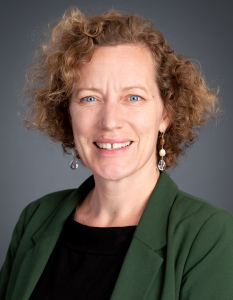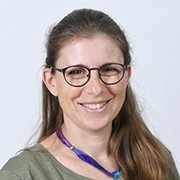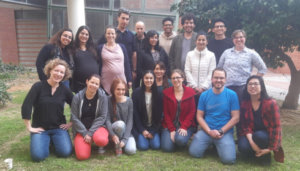
Team Studies Mutations in HIV Genome
Scientists focus on mutations to advance the study of HIV

The human immunodeficiency virus (HIV) is responsible for one of the most devastating pandemics across the globe. While advances in medications have dramatically slowed the death rates in patients who would have probably succumbed to AIDS a generation ago, there is still no vaccine to stop HIV in the first place. A BSF-supported project aims to make inroads toward that goal.
The project is led by Dr. Adi Stern of Tel Aviv University, and Dr. Pleuni Pennings, an assistant professor at San Francisco State University’s Department of Biology. In 2016, they were awarded a joint NSF-BSF grant to study mutations in the HIV genome. One of the reasons cited for the difficulty in developing an effective HIV vaccine is the exceptionally high mutation rate of the virus. However, this is a double-edged sword: mutations may create new variants of virus that are more fit (viruses that replicate better and are more dangerous to the host), but they may also create variants of the virus that are less fit (viruses that replicate worse and are less dangerous to the host).

Stern and Pennings seek to quantify the effects of every single mutation on the fitness, i.e. the ability to replicate, of HIV. They are doing this by developing both new statistical methodologies, as well as new DNA sequencing technologies, which will allow them to detect rare viral mutants from patient samples.
“By measuring the frequency of different viral mutants across multiple patients, we will be able to statistically infer their fitness,” said Stern.
Ultimately, Stern and Pennings hope that new knowledge obtained about the fitness of every single HIV mutant will allow for a better understanding of the evolution of HIV.
“We want to move this evolution from a retrospective mode to a prospective mode, where evolutionary forecasting of this virus may be possible,” said Pennings. As an evolutionary biologist, she focuses on drug resistance in HIV.
Their partnership is propelled by a mutual interest in learning more about how viruses form, adapt and change.
Stern has been studying the evolution of RNA viruses (ones that have ribonucleic acid as the genetic material) for 15 years. Her research interests lie in the rapid evolution of viruses and their hosts. In her lab, she uses a combination of computational biology, evolutionary theory and experimental evolution to gain a better understanding of what she calls “a fascinating arms race” between viruses and hosts.
“Viruses and hosts are at war, and in order to survive, each side must constantly gain new weaponry,” she said. “At the lab, we aim to learn more about how viruses adapt to constantly changing environments, how host immune systems keep up, and if we can predict the future course of viral evolution.”
Pennings focuses on the evolutionary histories of disease-causing genes.
“I want to understand what determines the rate of evolution of drug resistance, so that we can find ways to halt the evolution of drug resistance,” she said.
Stern and Pennings met when they were both postdocs in the San Francisco Bay Area. Stern was working in the University of California, San Francisco’s Adino Lab, where a new method for accurate viral sequencing had been developed. Pennings wanted to learn more about the new technique.
“Because we were both interested in virus evolution, and both had an interest in sequence analysis and computational approaches, it made sense to connect,” Pennings said.

Pennings and Stern are grateful for the NSF-BSF grant, because it has allowed for valuable collaboration between Pennings’ team in San Francisco and Stern’s in Tel Aviv. Last year, Pennings and 9 other members of her lab team traveled to Israel to meet with Stern and her team at the Stern Lab.
“I wasn’t sure exactly what to expect, because I know that our students are quite different, but I think it was the highlight of the year for my students.” Pennings said. “My students and Adi’s students had a lot of conversations about science and about life. It was a unique experience for my students to visit a lab so far away and find that they can have meaningful conversations almost immediately with fellow researchers.”
One of the cruel ironies of the coronavirus is that it currently makes face-to-face meetings like this difficult. Still, given their backgrounds, it is no surprise that Stern and Pennings are also involved in fighting the virus. Stern is working closely with the Israel Ministry of Health to better understand the phenomena of asymptomatic COVID-19 carriers so that urgent, science-based public policy decisions can be responsibly made. She is leading one of 15 scientific research teams at Tel Aviv University pursuing ways to curb the coronavirus’s spread. Pennings is regularly using videos, her Twitter feed and her blog, Being A Better Scientist, to explain ever-evolving data and updates on the virus.
They both expect their partnership to continue, even beyond their BSF-supported work.
“Adi has a lot of expertise on sequencing which I don’t have, but other than that we have many similar interests,” Pennings said. “It’s been really fun to work together.”
